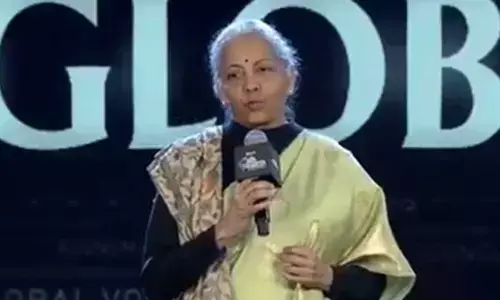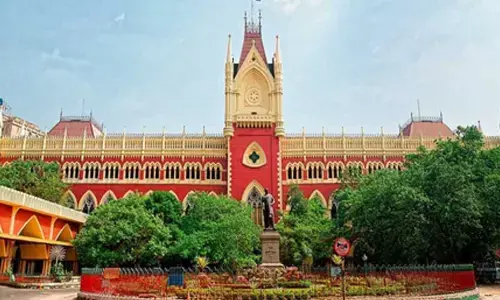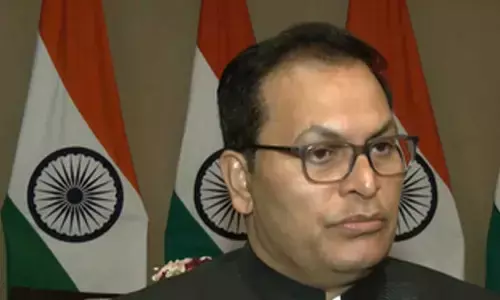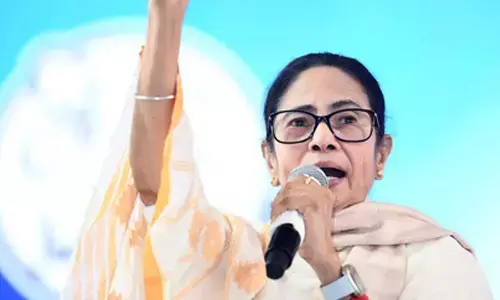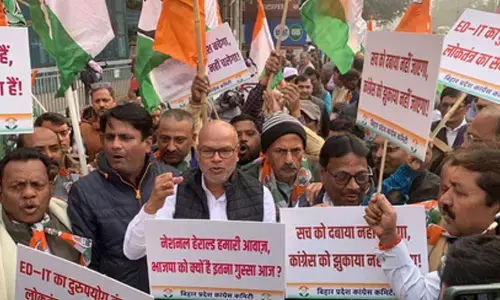RBI MPC Minutes: Six-member committee finds itself in Tunnel of Testing Trade-offs

Al members of the RBI’s six-member Monetary Policy Committee (MPC) in its meeting held between February 4-6, 2020,
Al members of the RBI's six-member Monetary Policy Committee (MPC) in its meeting held between February 4-6, 2020, decided to keep the policy repo rate under the liquidity adjustment facility (LAF) unchanged at 5.15 per cent.
The minutes of the MPC's meeting will be published by February 20, 2020.
Consequently, the reverse repo rate under the LAF remains unchanged at 4.90 per cent, and the marginal standing facility (MSF) rate and the Bank Rate at 5.40 per cent.
These decisions were taken in consonance to achieve the medium-term target for consumer price index (CPI) inflation of 4 per cent within a band of +/- 2 per cent while supporting growth.
In the line of weak growth and high inflation, Dr Michael Debabrata Patra deputy governor of the Reserve Bank of India said, the MPC has entered what I call "the tunnel of testing trade-offs (TTT)" and it may be a while before the light at the end of the tunnel is sighted.
The MPC met soon after the Union Budget, which pegged the fiscal deficit at 3.8 per cent for FY20 and 3.5 per cent at FY21.
Statements by the members of the MPC
Shaktikanta Das, RBI Governor
The Union Budget has sought to provide counter-cyclical support to the economy while broadly adhering to fiscal prudence. Monetary transmission and bank credit flows have improved, but they need to become stronger. While the macroeconomy needs further monetary stimulus, the inflation outlook continues to be uncertain.
He said, "Considering the overall evolving growth-inflation situation, it would be prudent to continue the focus on growth in the context of the expected moderation in inflation. This would indeed be in sync with the concept of flexible inflation targeting. Financial stability also requires the revival of the growth trajectory."
Considering all these aspects, I vote for keeping the policy repo rate on hold and for maintaining the accommodative stance as long as necessary to revive growth, while ensuring that inflation remains within the target. Barring the intensification of global risks, there is policy space that needs to be timed optimally and opportunistically to maximise its impact on growth.
Dr Chetan Ghate, Member, MPC
He said, "As in the last several reviews, I continue to track household inflationary expectations carefully. Surprisingly, since the last review, median 3-month ahead inflationary expectations have moderated from 9.2 per cent to 8.6 per cent (60 bps). One year ahead inflationary expectations have also moderated from 9.9 per cent to 9.2 per cent (70 bps)."
Headline CPI inflation in December 2019, spiked to 7.35 per cent from 5.5 per cent in November 2019 and 4.6 per cent in October 2019. The sharp uptick in headline inflation was driven by a sharp uptick in food inflation. Onion inflation increased to 328 per cent, which alone accounted for a 210 bps increase in headline inflation despite its small weight (0.64 per cent) in the overall index. This is consistent with the significantly lower mandi arrival of onions in October-November due to unseasonal rains.
He said, "If growth hasn't revived with a 135 bps cut in the policy rate, and a tax stimulus - through corporate tax cuts, personal income tax rationalization and reductions in various rates from the GST - amounting to 1.2% of GDP, then the need of the hour is more structural reform." Having said this, fiscal deficit uncertainty may require the MPC to accept tighter than desired monetary conditions to ensure our commitment to the medium-term inflation target.
He said, "The Real GDP growth during March 2015 – September 2019, has averaged 7.2 per cent. This would suggest that the Indian economy has performed like a "7-4" economy (averaging roughly 7% growth and roughly 4% inflation) throughout flexible inflation targeting. I find the growing chorus challenging the efficacy of flexible inflation targeting in India worrying. For those who advocate targeting an inflation rate higher than 4 per cent, I am sorry: 4-6% inflation is not priced stability!
However, he said, the monetary policy continues to be well-positioned. While I don't see space for further cuts going forward, I remain data-dependent. While the current spike in headline inflation is likely to lack persistence, the inflation numbers should be carefully watched.
Given the above reasons, I vote to pause. I also vote to retain the stance as accommodative.
Dr Pami Dua, MPC Member
She said, "To address growth in the economy, there is merit in adopting a wait-and-watch approach. This will allow for the pending monetary transmission to be realised soon."
Further, measures already undertaken by the government to address the growth slowdown are expected to play out, including the fiscal stimulus in the form of a major overhaul in corporate income tax aimed at reducing the overall tax burden on corporates and, in turn, improving India's global competitiveness. Moreover, growth initiatives announced in the Union Budget are also expected to pan out slowly. Additionally, the impact of global growth on the domestic economy would have to be examined in light of the recent epidemic.
At the same time, while growth is slowing, headline inflation has increased beyond the upper tolerance band and is expected to remain at elevated levels (5% or above) through Q2:2020-21. At this juncture, it is, therefore, best to monitor incoming data on both inflation and growth, given the evolving inflation-growth dynamics. I, therefore, vote to keep the policy rate unchanged and continue with the accommodative stance.
Dr Ravindra H. Dholakia, MPC Member
He said, "Since the last meeting of MPC in December 2019, several major events have occurred and new data is available. Greater clarity has emerged on several uncertainties perceived at that time, though some new uncertainties have arisen and assumed more importance. The latest two readings of monthly headline inflation for November and December 2019 have been significantly above the RBI forecast largely on account of the spikes in onion prices."
According to Dholakia, "The Union Budget for 2020-21 has presented a fiscal policy of the Centre that borders on being contractionary rather than expansionary on misplaced concerns about fiscal slippage in the face of a serious growth slow-down." Under such circumstances, in my view, the monetary policy should preserve policy space for any rate action at an appropriate time. I, therefore, vote to maintain the status quo on both the policy repo-rate and the accommodative stance in this meeting.
Union Budget for 2020-21 has been presented with no major impact on both growth and inflation in my opinion. As a result, there is no risk of output gap closing rapidly in the short to medium term. Global growth slow-down is confirmed by now.
Real rates of interest and policy rates globally are very low and negative in several comparator counties. Our real rates are high. Transmission of the past rate cuts is improving late, which would continue to provide corrections to the real rates.
He added, "There is a definite space for policy rate action in the light of the above arguments. The question is – is this the right time? We need to wait for the other half of the fiscal policy given by the budgets of the States."
While monetary policy is important for the short-run revival of aggregate demand, the long-term growth revival depends critically on the fiscal policy and structural reforms. When the long run revival is not seriously attempted, any substantial recovery in the short run is also likely to be elusive and the monetary policy stimulus that works only indirectly and with lags is also likely to be less effective. Under such circumstances, I would like to continue with the status quo on both the policy repo-rate and the accommodative stance.
The next meeting of the MPC is scheduled during March 31, April 1 and 3, 2020.








